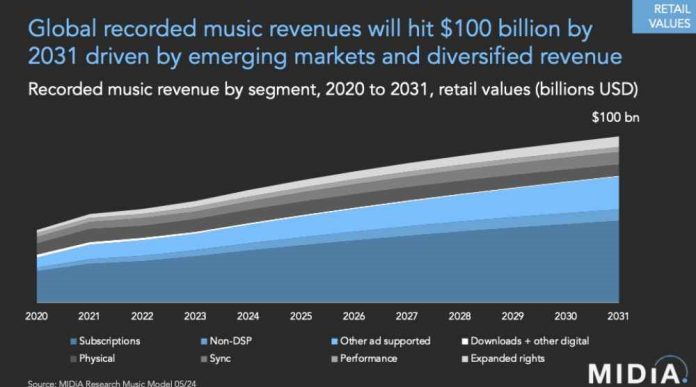
As streaming platforms dominate the global music industry, one of the most pressing issues that has emerged is the disparity in streaming royalties based on geographic regions. For artists, the revenue generated from streaming can vary significantly depending on the listener’s location. This is particularly problematic in emerging markets, where lower subscription rates and ad revenues result in reduced payouts for musicians. These regional disparities in streaming royalties highlight the need for a more equitable compensation model that accounts for the global reach of digital music.
The Geographic Divide in Streaming Royalties
Streaming platforms like Spotify, Apple Music, and YouTube have become the primary sources of music consumption worldwide, but they do not operate uniformly across all regions. Subscription prices and advertising revenues, two key factors in determining streaming royalties, differ greatly depending on the economic status of each region.
In wealthier regions like North America and Europe, where subscription fees are higher and ad revenues more lucrative, artists earn more per stream. Conversely, in emerging markets like Latin America, Africa, and parts of Asia, streaming services often charge lower subscription rates to attract users. Additionally, advertising revenues are lower in these regions due to reduced ad spend, which further drives down the amount artists earn per stream.
For example, Spotify’s Premium subscription costs significantly less in countries like India and Brazil compared to the United States or the UK. While this helps streaming platforms expand their user bases in price-sensitive markets, it leaves artists struggling to earn comparable income from streams in these regions.
The Impact on Emerging Markets
In emerging markets, where internet access and smartphone usage have surged, the number of streaming users has grown rapidly. However, the financial returns for artists remain disproportionately low. This presents a paradox: while artists are gaining larger audiences globally, the financial benefits of these new listeners are not keeping pace.
For local artists in these regions, the situation is even more challenging. They are competing with international artists for listeners. They are also earning less for their streams compared to their counterparts in wealthier regions. This makes it harder for musicians in emerging markets to sustain their careers solely through streaming revenue. It is pushing many to seek alternative revenue streams or rely on live performances, which isn’t viable in all cases.
What Can Be Done to Bridge the Gap?
To create a fairer model for artists worldwide, several reforms could be considered. One potential solution is adjusting streaming payout models based on local cost of living and economic conditions. Rather than paying a fixed amount per stream, streaming platforms could take into account the economic realities of different regions.
Another possible reform is the implementation of a user-centric payment system (UCPS). Under this model, streaming royalties are distributed based on individual user listening habits rather than a global pool of revenue. In theory, this could provide a more direct link between the listeners and the artists they support. The revenue generated by a user’s subscription or ad consumption goes directly to the artists they listen to most. This is regardless of location.
Governments and policymakers in emerging markets could contribute by offering subsidies or tax incentives to local artists and music industries. This would help to offset the lower earnings from streaming platforms. Collaborations between streaming services and local music organizations could also help ensure that artists in these regions receive fairer compensation.
The Future of Global Streaming
As the music industry becomes more globalized, finding ways to balance artist compensation across regions will be crucial. Yes, streaming platforms have revolutionized how music is distributed and consumed. However, the current model leaves many artists in emerging markets, struggling to reap the full benefits of their fan bases.
A shift towards more equitable compensation structures will not only support musicians but also foster more diverse musical landscapes. By addressing the disparities in streaming royalties, we can ensure that artists, wherever they are, can thrive in this era.
Conclusion: Toward a Fairer Streaming Economy
Geographic disparities in streaming royalties present a significant challenge for artists worldwide. As streaming services expand into emerging markets, reforms are needed to ensure that musicians are fairly compensated for their work. With dynamic payout models, user-centric systems, or government interventions, the industry can find ways to balance artist earnings across regions. We can create a more sustainable future for music.
Learn more helpful regional information here on Music Industry Weekly.







